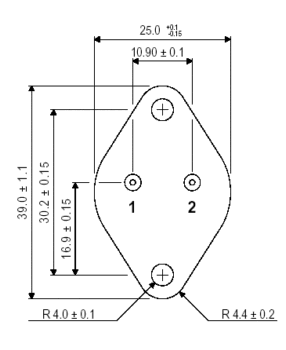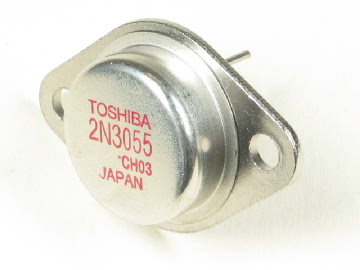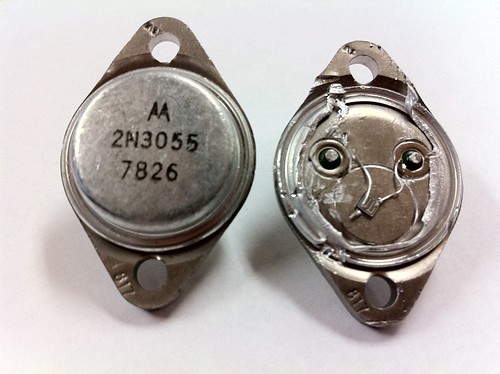Hey Guys ...
I have a Marshall 2098 solid state amp running HOT at idle (almost too hot to touch without signal).
The lay of the land:
The output transistors are: MJ15022/MJ15023 (replacing the MJ3001/MJ2501 pair).
The BC182 was replaced with a 2N3904
The BC212 was replaced with an NTE193
The BC184K was replaced with a 2N3904
Also, the two 470 ohm resistors were replaced with pots to be adjustable (this was a later factory engineering change).
Voltages on MJ15022 (NPN - MJ3001 replacement):
Vc = +38V
Vb=0.95V
Ve=+.29V
Voltages on MJ15023 (PNP - MJ2501 replacement):
Vc = -38V
Vb= -0.85V
Ve=-.28V
Note: Voltages measured with respect to ground, the auto transformer removed from the circuit and with no speaker connected).
Also, I am measuring about .275 volts across the .33 resistors (which seems very high).
I am suspicious of the mismatch between the NTE193 and the 2N3904; I was thinking of replacing the NTE193 with a 2N3906 to make them a little more matched.
Anyone have any ideas how to attack this (and/or why this is happening)?
Thanks

I have a Marshall 2098 solid state amp running HOT at idle (almost too hot to touch without signal).
The lay of the land:
The output transistors are: MJ15022/MJ15023 (replacing the MJ3001/MJ2501 pair).
The BC182 was replaced with a 2N3904
The BC212 was replaced with an NTE193
The BC184K was replaced with a 2N3904
Also, the two 470 ohm resistors were replaced with pots to be adjustable (this was a later factory engineering change).
Voltages on MJ15022 (NPN - MJ3001 replacement):
Vc = +38V
Vb=0.95V
Ve=+.29V
Voltages on MJ15023 (PNP - MJ2501 replacement):
Vc = -38V
Vb= -0.85V
Ve=-.28V
Note: Voltages measured with respect to ground, the auto transformer removed from the circuit and with no speaker connected).
Also, I am measuring about .275 volts across the .33 resistors (which seems very high).
I am suspicious of the mismatch between the NTE193 and the 2N3904; I was thinking of replacing the NTE193 with a 2N3906 to make them a little more matched.
Anyone have any ideas how to attack this (and/or why this is happening)?
Thanks










Comment